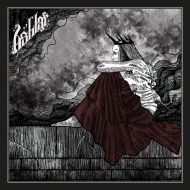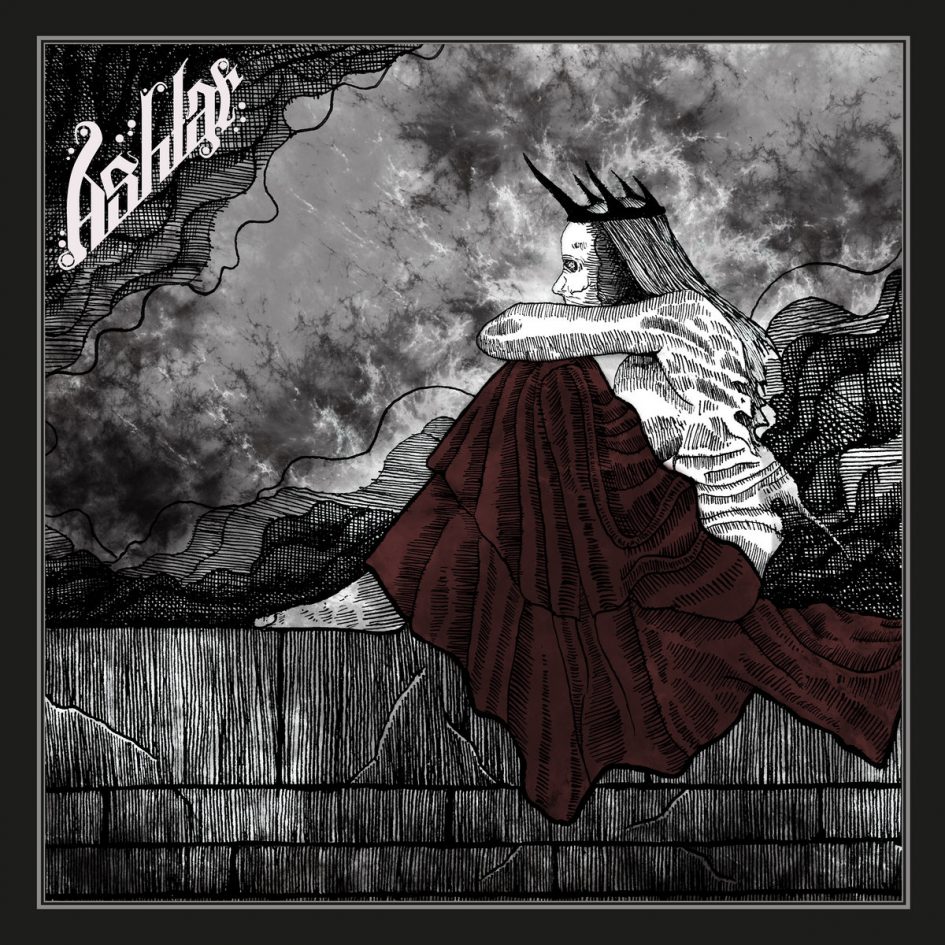 An album cover is always a good starting point to get acquainted with a band, I find. At least it should be. As mentioned before, I like it when album cover art and music fit well together. In fact, this congruence and attention to detail are among the indicators for a good, dedicated album.
An album cover is always a good starting point to get acquainted with a band, I find. At least it should be. As mentioned before, I like it when album cover art and music fit well together. In fact, this congruence and attention to detail are among the indicators for a good, dedicated album.
The cover of Ashtar’s Kaikuja features a figure sitting on a wall laced with cracks, ruminating, waiting. In the background there is a fire raging and smoke has darkened the sky. The design borrows from art nouveau and evokes fin de siècle sentiments – feelings that accompany the closing of an era and the onset of another. The band logo is held in a similar style, with an additional Arabic, floral touch. Black and grey are the dominant colours, making the crimson cloth covering the figures legs stick out even more. The mood is dark, cathartic, drama-laden and melancholic. The album’s music, as expected, turned out to be of a similar character.
Ashtar are a duo from Basel, Switzerland, consisting of husband and wife Nadine and Marko Lehtinen. Prior to forming Ashtar in 2013, they both played in other bands. Nadine writes the lyrics and is responsible for the vocals. In addition, she plays bass, guitar, and violin. Marko plays drums, guitar and bass. When recording, they play all instruments themselves, when performing live, they have two additional guitarists.
Kaikuja is the band’s second album. Their debut album Ilmasaari received favourable reviews and made it on the best-albums-of-the-year-2015 list of none other than Tom Gabriel Fischer (Celtic Frost/Triptykon). That certainly raises the bar high.
“Kaikuja” is Finnish and means “echoes” – definitely an apt description for the album’s cavernous soundscapes full of repetition and reverberation.
The first track Aeolus offers instant satisfaction, opening with furious black metal in the form of tremolo picked guitars, fast drumming and shrieky, screamed vocals. But the black metal storm is intermixed with heavy, moody doom and sludge, presenting a glimpse into things to come.
Between Furious Clouds is the album’s second, longest and possibly most complex track. In its beginning it has brooding, ominous guitar play, quickly joined by a melancholic violin. The tempo is slow, the atmosphere dark and sad. Things change, however, when the other instruments and the vocals set in. The tempo remains the same, but the rhythm shifts to marching evoking the impression of danger approaching. In addition, the constant repetitions in the sound have a hypnotic effect.
The three remaining tracks, Bloodstones, The Closing and (She is) Awakening, follow the template sketched above: Traces of black metal are combined with doom and sludge, with the latter being more dominant than the former. However, genre labels might not be the best way to describe this album. I would say that the brooding, ominous but simultaneously melancholic atmosphere is its most defining and most special aspect.
Therefore, if you like your music heavy, moody and ominous, but also laced with filigree threads of melody, then this is for you. Kaikuja’s layered sound offers things to discover for many run-throughs.
(7.5/10 Slavica)

Leave a Reply